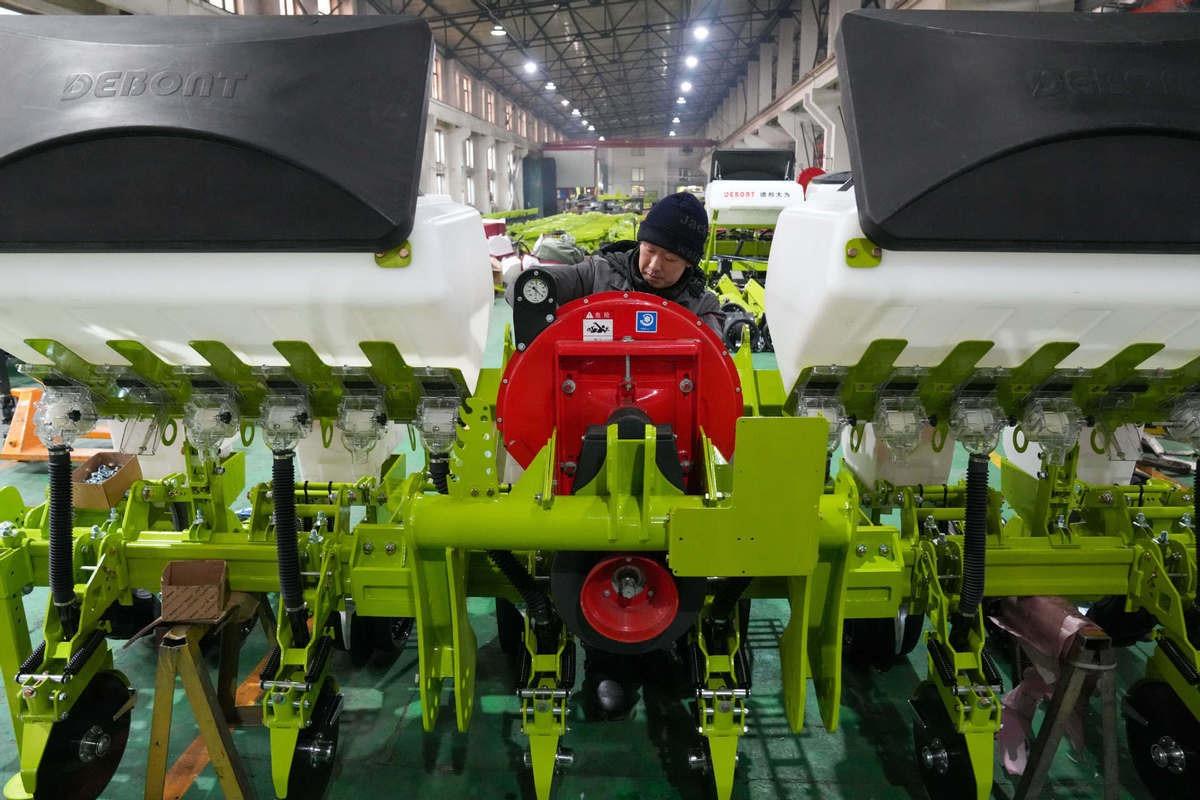 A staff member assembles a planter at the workshop of an agricultural machinery manufacturing enterprise in Jiamusi, Northeast China's Heilongjiang province on March 12, 2024. (PHOTO / XINHUA)
A staff member assembles a planter at the workshop of an agricultural machinery manufacturing enterprise in Jiamusi, Northeast China's Heilongjiang province on March 12, 2024. (PHOTO / XINHUA)
There was more good news for the Chinese economy as the manufacturing purchasing managers' index reached 50.8 percent in March, up 1.7 percentage points from February. This is the first time the figure has returned to the expansion range after running below 50 percent for five consecutive months.
The previous contraction of the manufacturing PMI was mainly due to domestic demand being in the recovery stage, insufficient demand, de-stocking in some industries, and the Spring Festival holiday. The uptick gives policymakers and industries more space in which to maneuver.
It is an encouraging sign that all three major manufacturing industries — high-tech, consumer goods and equipment manufacturing — expanded simultaneously, with their PMI in March standing at 53.9 percent, 51.8 percent and 51.6 percent respectively, up 3.1, 1.8, and 2.1 percentage points from February.
The production index and new order index of the manufacturing PMI were 52.2 percent and 53.0 percent respectively, up 2.4 and 4.0 percentage points from February, indicating a recovery on the demand side to some extent.
External demand has improved too. The new export and import order indexes have both risen to the expansion range, reaching 51.3 percent and 50.4 percent respectively, up 5.0 and 4.0 percentage points from February. In the first two months of this year, China's exports were $528.01 billion, a year-on-year increase of 7.1 percent, with the 6.0 percent growth of exports to the Association of Southeast Asian Nations as the main driver.
In addition, the nonmanufacturing industry has continued to stabilize and improve. In March, the nonmanufacturing business activity index rose to 53 percent, rising for four consecutive months and hitting a new high since July 2023.
The continued rise in economic activity has had a positive impact on business confidence, with the business activity expectation index in the service industry and construction industry both rising above 58 percent. And the series of pro-consumption and pro-business policies China is implementing are also expected to drive the growth of new orders in the manufacturing industry, further boosting entrepreneurs' confidence.
But it is difficult to say whether the rebound in manufacturing PMI can be sustained in the long run. For one thing, although the number of orders has rebounded recently, it has not translated into an increase in profits. In March, the purchasing price of raw materials in the manufacturing PMI was recorded at 50.5 percent, an increase of 0.4 percentage points from the previous month, but the ex-factory price index was 47.4 percent, which fell by 0.7 percentage points, and that figure has been in the contraction range for six consecutive months.
In order to grab orders, the export industry has reached a new level of cutthroat price competition. Most manufacturing factories currently adopt an upstream-downstream joint approach, with raw material suppliers and factories directly cooperating in production to reduce costs and create price advantages, although at the expense of future performance. The increase in purchase prices was mainly driven by the increase in international commodity prices, while the ex-factory price index fell, reflecting insufficient terminal demand and the weak bargaining power of enterprises. With increasingly narrowing profit margins, it is obvious that the difficult times for enterprises have not yet come to an end.
Although the rebound of the manufacturing PMI is largely a result of seasonal factors, it still shows that favorable factors are accumulating. But as most of the downward pressures that have depressed the manufacturing PMI have not yet been resolved, more needs to be done to boost the market's confidence so that the recovery can be sustained.


